It was Friday, June 23, 2023. The rain poured on us while we shoorchbar’ed in celebration of our traditional wedding heenoom before an arched monument framing a foggy view of Mount Ararat’s silhouette.
To immortalize the nostalgic rain we welcomed that night, I put pen to paper.

* * *
I can never answer the, “Where are you from?” question without the history lesson my name bears.
“You were born and raised in Northern California, your parents were born and raised in Lebanon, and your grandparents hail from the Mediterranean village of Musa Ler near the border of Syria. Where does Armenian fall into this equation?”
Cue the familial history lesson.
My maternal great-grandfather, Margos Snabian, was among the frontline freedom fighters of the Resistance Battle of Musa Ler in 1915. With minimal resources and all odds against them, the Armenian willpower to live freely on ancestral lands prevailed against any obstacle. Thus the daring Musa Lerians were victorious over the genocidal Ottoman army.
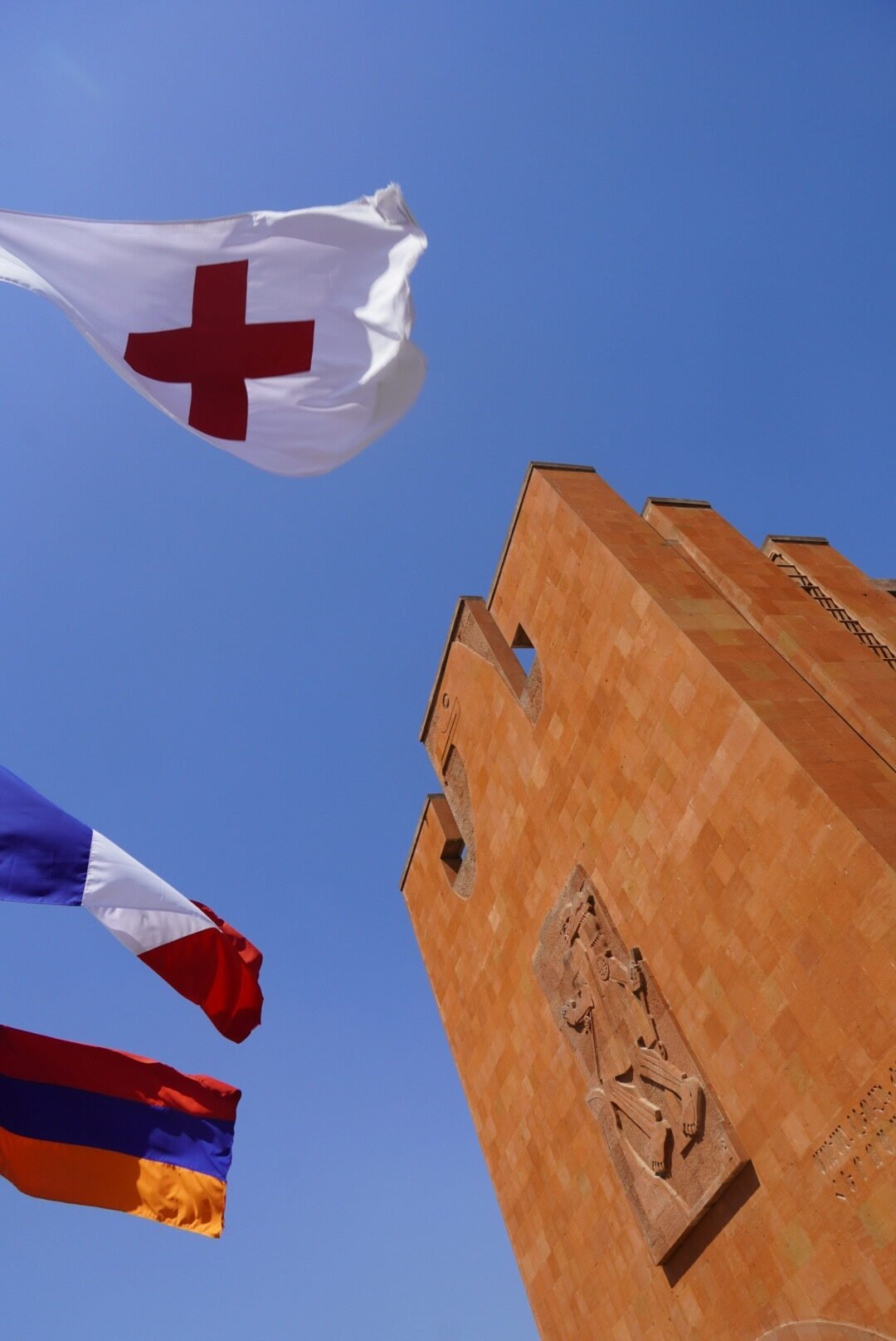
With gratitude for the French naval ship and the stitched red cross flag that led to their ultimate survival, the descendants of Musa Ler across the world mark September as a sentimental month. The Armenian Apostolic Church’s Holy Feast of the Cross coincides with the commemoration of the Battle of Musa Ler and the red cross that saved the 4,200 villagers atop the Mediterranean mountain during the Armenian Genocide.
To honor the 18 martyrs of the resistance, Musa Lerians in Armenia and across diasporan communities in Anjar, Lebanon; San Francisco; Fresno; New York; Cambridge, Canada and many others prepare a madagh, or offering, to the community. Harissa, a delicacy made of cracked wheat and lamb, is served following the blessing of the Holy Feast of the Cross. Growing up far away from my ancestral lands, serving harissa to my San Francisco Bay Area community every mid-September instilled a great sense of pride in my Musa Lerian roots and only deepened my longing for my native village.
* * *
Four years after living at a refugee camp in Port Said, Egypt post-resistance, the Musa Lerians settled back in Musa Ler, which at the time was under French control. In June of 1939, following a pivotal agreement, the French handed the Hatay province, therein Musa Ler, to the Turkish government. The Musa Lerians refused to live under Turkish rule, and so the French promised them a piece of land in Lebanon where they could resettle. On their second wave of refuge, the Musa Lerians left their ancestral lands behind and migrated to what we know today as the nostalgic village of Anjar, Lebanon.
My paternal grandparents, Panos and Mariam Panossian, and my maternal grandfather, Boghos Snabian, were among the villagers on this voyage to Anjar. Along their journey, they set up camp in Bassit, Syria, where they rested for over a month. My Boghos Baboug was 12 years old at the time. His fond memory of a collective act of pure resilience at the resting camp moved him so deeply that he put pen to paper later in life and immortalized the scene for generations to follow. With that, I am proud to share an excerpt detailing the scene from his renowned short story, Պարը / “The Dance”…
«…Մարդկային կերպարանքները ուրուագծուեցան լոյսին քով, լոյսը խարոյկի մը ծաւալը առաւ յանկարծ, ձայները դարձան աղաղակներ, աղաղակներուն խառնուեցաւ թմբուկի մը գոռ ձայնը, ու մարդիկ, մեծով պզտիկով, անձրեւը մոռցած՝ շարժեցան առաջ եւ խառնուեցան ճարճատող խարոյկին ու թնդացող թմբուկին շուրջ արդէն սկսած պարին…»
The spirit was low; the sickness and exhaustion were high. The rain poured on the Musa Lerian migrants. To keep their tired bodies warm and to boost the morale, a villager began to fiercely drum the dhol, and in unison, elders and children, the freedom fighting generation and their sons and daughters interlocked hands and danced the ancestral dabke of Musa Ler under the pouring rain. The Armenian willpower to survive prevailed once more, the daring Musa Lerians persisted, and life was rebuilt in Anjar.
* * *
Although I was not born and raised in Anjar, I consider it home. My fondest childhood memories have taken place in Anjar. Every drive by the heartwarming “Welcome to Anjar” sign greeted us to a new Musa Ler, a nostalgic oasis, a land where they speak Western Armenian and the preserved dialect of Musa Ler, a village that will always recognize you by your father and grandfather’s nicknames. I am Terats’s daughter and Uhroob’s granddaughter.
Anjar is home to the picturesque Saint Paul Church, where my four grandparents and parents all got married. I was never sure if I would get married in Anjar myself, but I always knew that I would keep their Anjarian wedding traditions alive as a form of my own resilient Musa Lerian existence. Thank you, Մամ and Հայրիկ (Mom and Dad).

* * *
When my husband Aram Spendjian and I got engaged, we knew we did not want a destination wedding. We wanted a homecoming wedding. With part of his ancestral roots in Lori and my name, Sanan, being the abbreviated version of Sanahin, we wed at Saint Sanahin Monastery, coincidentally located in the lush evergreen region of Lori, Armenia.
Before reaching the altar, however, we had a once-in-a-lifetime milestone to honor: the traditional heenoom, the Western Armenian henna/ghna ceremony. While it would have been a dream to host our heenoom on the village roads of Anjar like the generations that raised me, Aram and I were inspired to think outside the box and find the most meaningful location in Armenia.
To live out my daring Musa Lerian dream of hosting an authentic heenoom and to get as close to my ancestral roots as possible, we chose a site that felt like home in many ways: the Monument and Museum of the Heroic Battle of Musa Ler, wherein my maternal great-grandfather’s photo is showcased amongst the freedom fighters of 1915 – a site where my ancestors are present in Musa Ler on Armenian soil.

And so, we honored tradition. As it lightly sprinkled through the gusting winds, my family and I danced under the arc of the monument atop the hill, awaiting the groom. Aram and the Spendjian family, henna tray in hand and with an open heart to our Musa Lerian customs, paraded up the grand stairway alongside the ancestral melodies of the dhol-zurna and were welcomed by my family to our home.

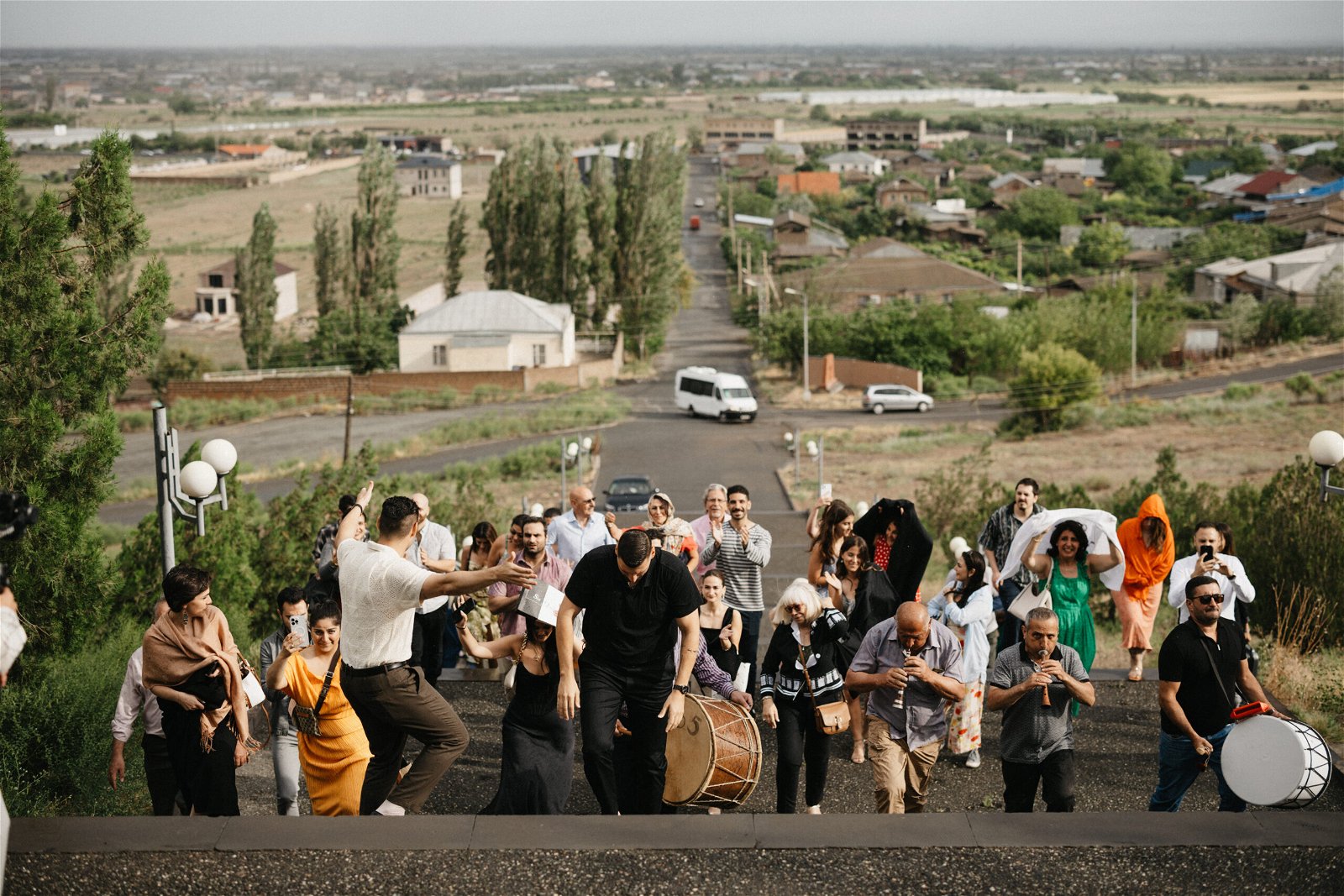
The clouds cleared and my cousin Narod Seroujian, who was my maid of honor and shares the same Musa Lerian roots, brilliantly emceed the traditional welcome. She kneaded the powder henna with oghi, draped the kogh, a bridal veil embroidered by my late paternal grandmother, over my head, marked my palm with the henna paste, and tied it with a handkerchief embroidered by my maternal grandmother.
«Մեր հարսը խերով,
Փեսան պեխերով,
Ասացէք շնորհաւոր ըլլայ»
“Our bride with luck,
our groom with a mustache,
let us congratulate them…”
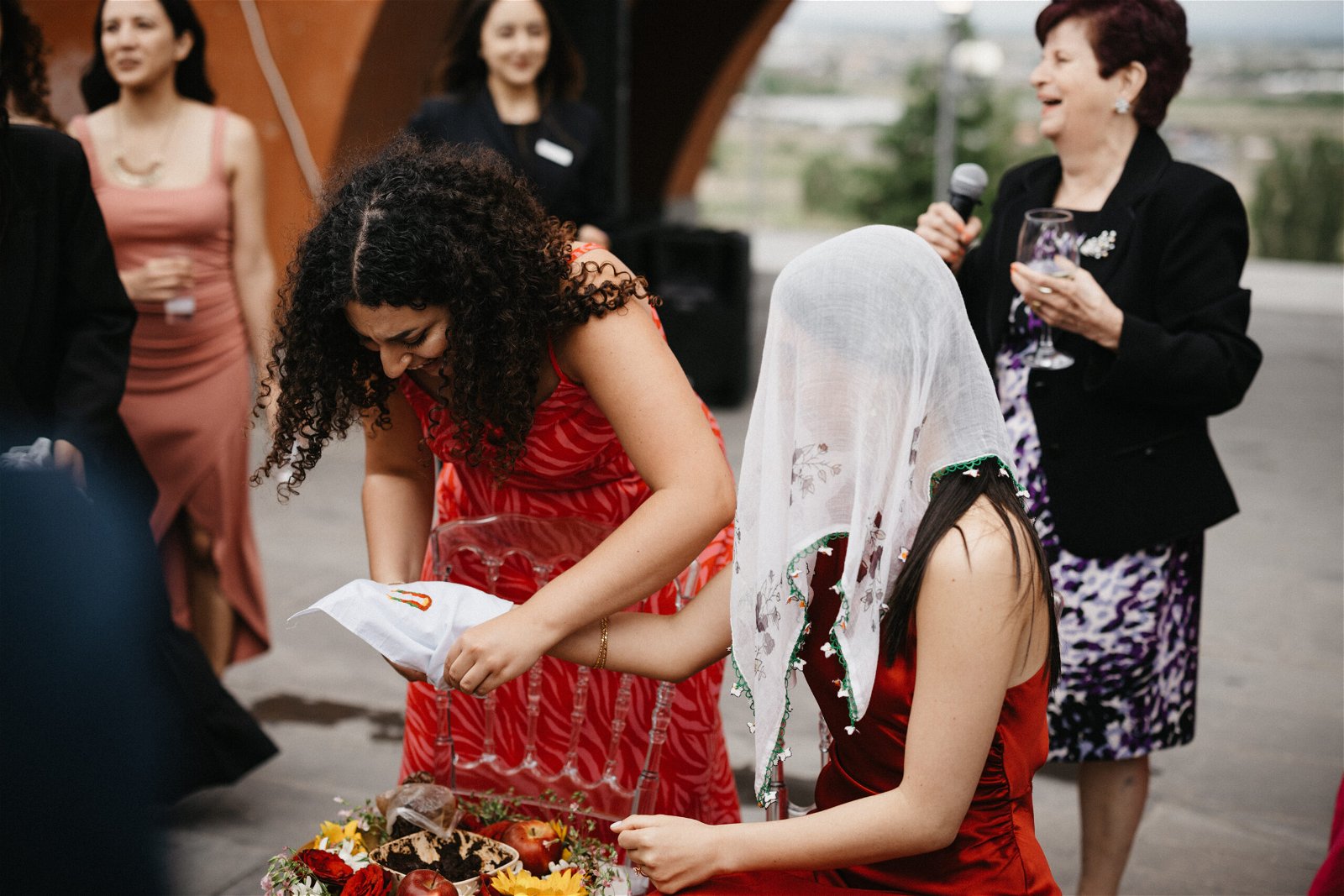
Village wedding songs were sung by my mother, grandmother and aunts, and my beautiful friends who had joined us from all over the world danced with me and took bites of the red apple for good fortune and love.
«Ա՜խ այս տարա, այս տարա, խնձոր շատ կայ այս տարա…»
“Oh this year, this year, there is an abundance of apples this year…”

Together, the two families danced toward the groom’s side of the ceremony. Staying true to custom, the groom, his best man, cousins and friends all sat on the floor in a circle, paying close attention to the ceremony’s elder, my uncle Kapriel Panossian. Kapeesh Ammo took us back to Anjar with traditional cheers, pleasantries and stories from the ancestral lands as my brother Meero Panossian, an engaged young man by custom, marked Aram’s palm with the henna paste and tied it with an embroidered handkerchief.
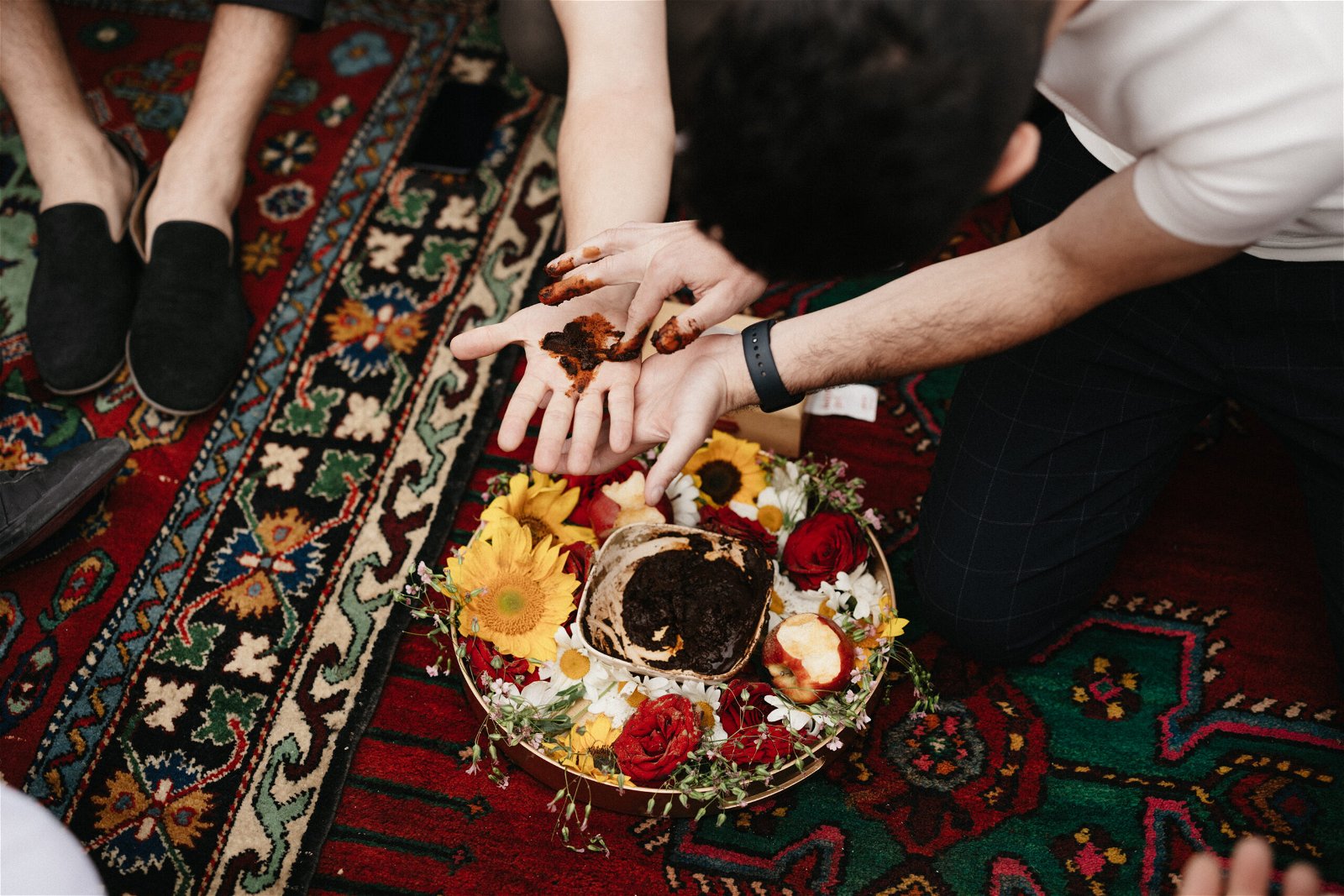
Perhaps the most anticipated act of the ceremony kicked off with the good-natured teasing of the best man, Aram’s brother, Garen Spendjian. The back-and-forth banter continued until he was rescued by his family for ransom and thus, his palm was marked with the remaining henna. This signaled the groom’s permission to marry his bride.
Custom says, this traditional act of marking the bride and groom’s hands using the same henna paste symbolizes their acknowledgment as one. In true Armenian fashion, Aram and I vowed to grow old together on one pillow. The dhol-zurna began to roar, and we danced with our matching handkerchiefs.
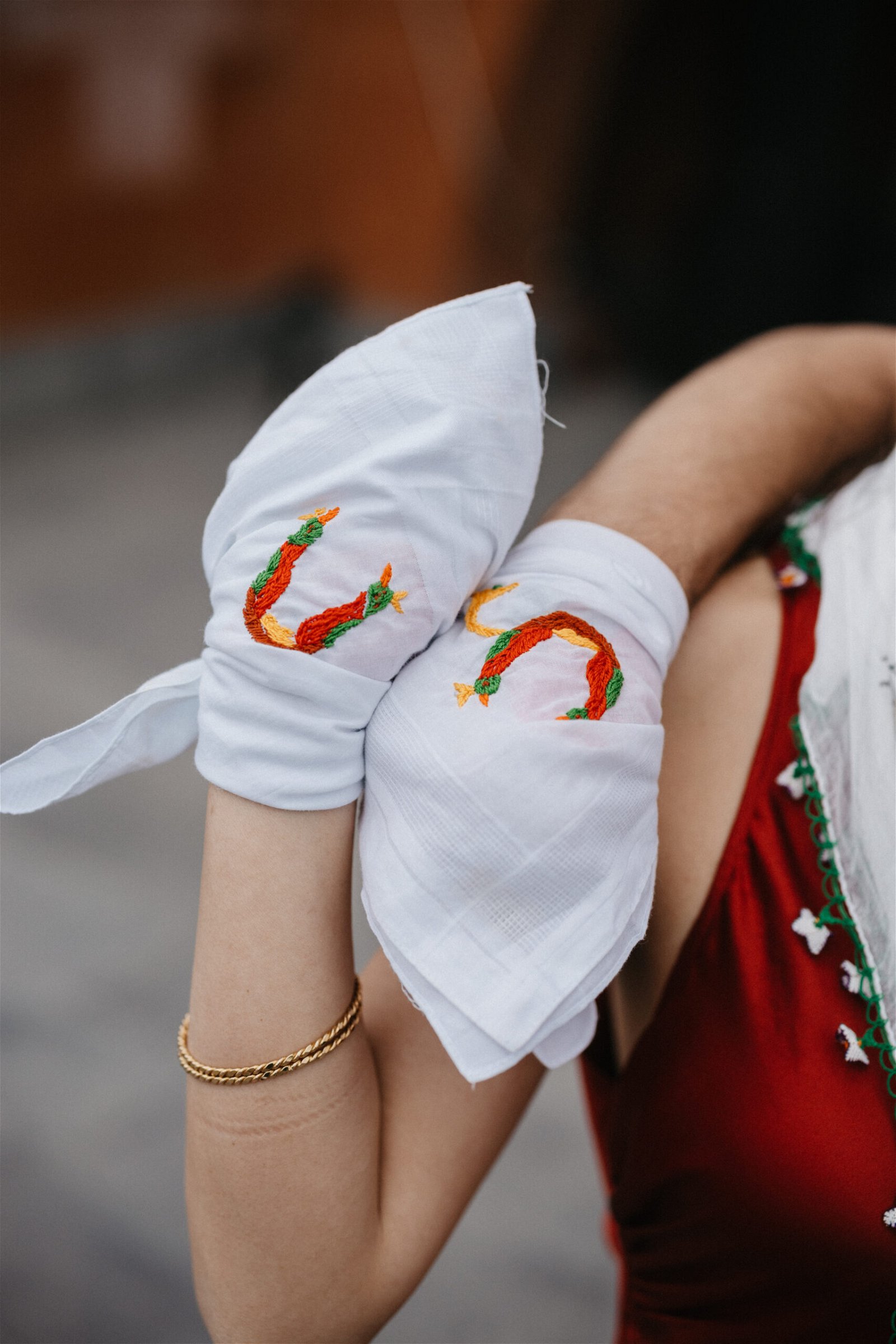
With a sentimental finale to honor our heroes of the past and present, we sang “Sardarabad,” as the clouds began to darken above us.
«Երբ չի մնում ելք ու ճար,
Խենթերն են գտնում հնար…»
“When all hope is lost,
the crazy ones find a way…”
Serendipitously, the rain began to pour. Our ancestors proved their presence.
Musa Ler descendant, Sarkis Zeitlian, ferociously began to drum his family’s dhol that dates back to 1885 Musa Ler. In unison, Musa Lertsi bride, Malatyatsi-Loretsi groom, parents, brothers, cousins, friends, elders, adolescents, the great-grandchildren of the freedom fighters, and the grandchildren of migrants who danced under the Bassit rainstorm all interlocked hands and shoorchbar’ed…

* * *
What do Armenians do when faced with adversity? We dance through the rainstorms.
Dancing under the pouring rain was our diasporan resilience. We channeled the willpower that was passed down from the frontlines of the 1915 resistance battle, the rainy resting camp in Bassit, the new Musa Lerian home of Anjar, the community line getting served harissa, our heenoom at the Monument and Museum of the Heroic Battle of Musa Ler and beyond.

My name carries my ancestors’ resilience.
My name bears the traditions of Musa Ler.
My name dances the shoorchbar under the rainstorm to the melodies of the dhol-zurna.
My name is my familial history lesson, and my diasporan resistance is to pass down our beloved Armenian traditions to the next generation.
Տարոսը փափաքողին…

Note: All of the historical accounts and traditions highlighted in this story have been orally passed down to the author by her parents, grandparents, aunts and uncles. This piece hopes to showcase the strength in storytelling and the power of transgenerational inheritance of our ancestral customs and stories of resistance.


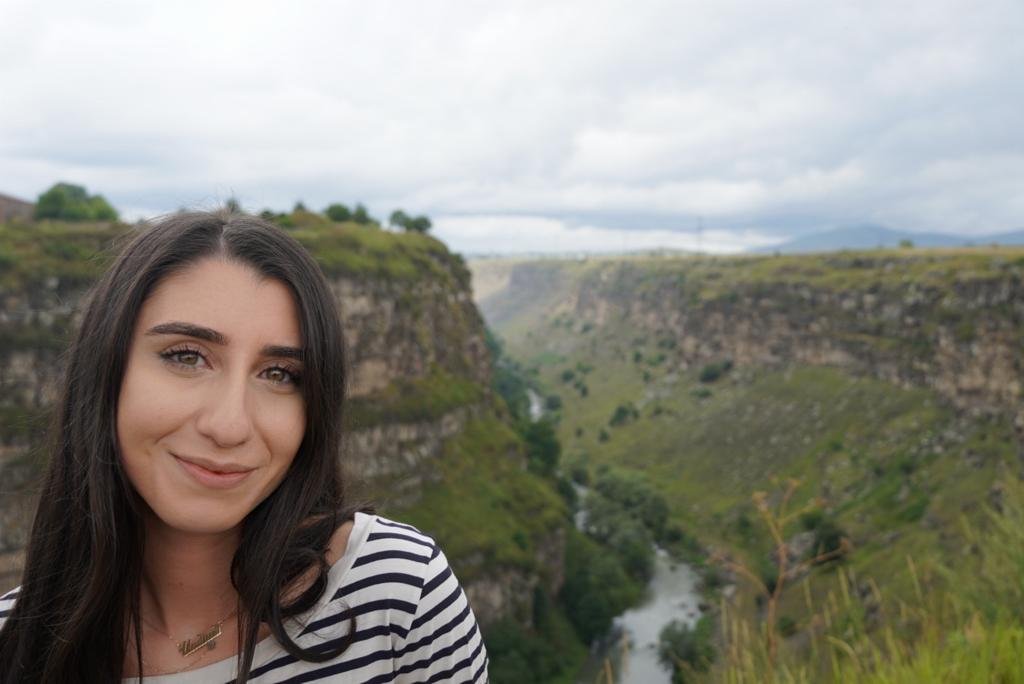
A beautiful rendition of a special occasion embellished even more with ancestral traditions. Happy to have been part of it all as the groom’s uncle Ared Spendjian’s spouse. Welcome to the family, dearest Sanan! We are now so much stronger with each other’s stories and traditions.
What a delightful… story… Thank you for bringing our ancestral history in such an eloquent and detailed fashion
What do Armenians do when faced with adversity? We dance through the rainstorms. Lovely! Perfect! Thank you for sharing your special wedding! Please, Kind, Merciful Compassionate, Awesome God, Bestow on the bride and groom and the entire wedding party all of Your Many Wonderful blessings! In Jesus Name, Amen.
Congratulations Sanan and husband! Proud of you!! You give hope to those of us s who are trying to raise children with Armenian identity in this part of the world. It is a very sad day today, but let us remember “the dance” always!
Truly a beautiful article filled with resilience, traditions, and love. Shnorhavor ellah Sanan and Aram.
Thank you Sanan, a beautiful article. You let our enemies know that our children will dance in our ancestral lands be it Van, Moush, Pagesh, Sepastia, Malatia, Musa Ler, Zeitun, Aintab, and ARTSAKH!
Bravo Sanan,
You are the deserving granddaughter of Boghos Snabian. We really enjoyed sharing your traditional hinoum with you and danced together under the rain.
Once again Congrats Aram & Sanan
I’m sure you 2 are going to have a 💯Haygagan family